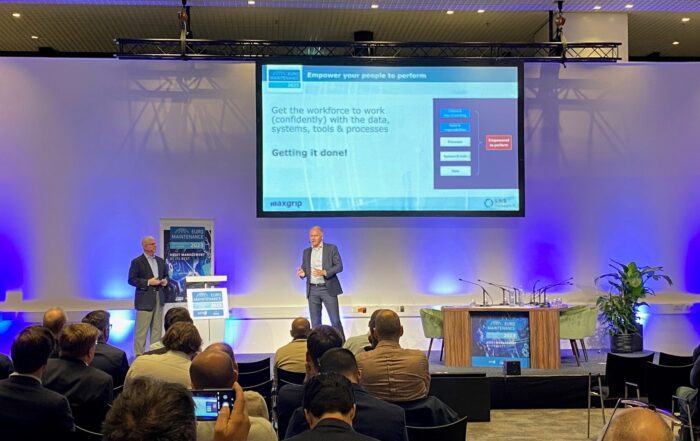This manufacturer stands at the forefront as a producer and distributor of silicon battery technology. The company started as a research facility to test their pioneering battery solutions which are now setting the standard for future locations. There are plans for two more production facilities. The company asked MaxGrip to help with the development of foundational data to enable growth and establish reliability best practices and supporting policies. The goal was to implement and sustain an optimized maintenance strategy.
Ambition: Meeting Growing Demand
The company focuses on enhancing the energy performance of lithium-ion
batteries which can have a transformative impact on devices and vehicles,
potentially leading to longer battery life and more efficient energy consumption.
Therefore, the company’s advanced silicon-carbon technology is pivotal for the
future of electrification, especially in the context of the growing demand for
efficient batteries in various sectors. The manufacturer is in a transition phase of
going from research to production. They want to be set up for success from the
start, meaning that they get the foundational structure and way of working
established in such a way that it allows the company to sustain rapid growth.
Approach: Essential Focus Areas
MaxGrip consultants have singled out essential focus areas to come to a
robust maintenance strategy. For all of these focus areas, the consultants
follow these steps:
- Validate: prepare, scope, check and analyze setup;
- Establish: organize stakeholder workshops to discuss the established
strategies and processes, introduce best practices and test in Proof of
Concepts; - Deploy: apply established standard to a pilot area;
- Sustain: enable sustainment of best way of working. This includes the
creation of standards and policies. In addition, if applicable, data is
uploaded to the CMMS system. MaxGrip worked hand-in-hand with the
CMMS provider to ensure a seamless adaption to their environment.
Focus 1: Master Data
This first area is crucial to ensure the accuracy, consistency, and usability of
data within the organization. A consistent and repeatable foundational data
management model across all sites will improve maintenance and reliability
efficiency and is sustainable for future sites. The model also covers all
aspects of asset database management such as asset hierarchy, asset
characteristics and naming or numbering conventions. This involves the
creation of a structured system that categorizes and organizes assets based
on their function and relation to other assets, including: asset hierarchy,
naming conventions and equipment attributes. In a pilot, data collection,
preparation, extraction, and review processes were implemented to validate
and refine the data. After a successful Proof of Concept, the asset register
was built with a clear definition of taxonomy levels and asset structure.
Focus 2: Equipment Criticality Assessment
This establishes a uniform process for a consistent approach when
assessing equipment criticality. The criticality indicators are important to
determine priority throughout key business processes. A risk matrix is used
as a tool to assess risk during multidisciplinary workshops. This process was
deployed to a key area of the production process to ensure its functionality
and empower the organization with a solid start to deploy across the HQ
facility and future locations. Based on a successful run, the team populated
load files tailored to the CMMS system, ensuring seamless integration and
functionality.
Focus 3: Maintenance Strategy
The Reliability-Centered Maintenance (RCM) strategy establishes and revises
maintenance strategies based on criticality, which ultimately increases
performance, creates a pro-active maintenance culture (instead of reactive)
and keeps maintenance execution cost under control. RCM focuses on
identifying and preventing equipment failures before they occur. The way of
working includes applying Failure Modes, Effects and Criticality Analysis
(FMECA), for which the client team was trained by MaxGrip consultants.
After the training and FMECA workshops, our team conducted a gap analysis.
Based on the findings, the equipment maintenance strategies were updated.
Implementation is key to fully realizing the impact of an optimized maintenance
strategy and MaxGrip worked with the CMMS vendor and the client to test the
interface before deploying the strategy into the system.
Focus 4: Planning, Scheduling and Spares
A work management workshop ensured that all stakeholders were aligned with
the overarching goals and methodologies. Our consultants created templates for
the PM model and job plans to streamline and standardize task allocations and
workflows. To ensure the effective implementation of these templates, our team
spearheaded maintenance planning sessions, focusing on the roll-out and
training of the job plan and PM model templates. This ensures that the team is
well-equipped to utilize these tools effectively. Our consultants provided the
optimized PM schedule for import in the CMMS system. This approach
guarantees optimized scheduling, preventing resource over-allocation and
ensuring timely maintenance.
The MaxGrip consultants also created a spare parts strategy. Using the insights
from the FMECA, our team identified critical spares, ensuring that these vital
components are prioritized and available. A significant enhancement to the
original scope was the establishment of minimum and maximum levels based
on the maintenance strategy. This ensures that stock levels are optimized,
preventing overstocking while ensuring that the spares required to execute the
optimized PM strategies are available.
“We are really happy with what MaxGrip did. One year later, the facility is running way better than it was before. It is much more reliable and quality has improved.”
– The Manufacturer’s Engineering Manager
Benefits: 27% Production Increase and Large Savings
MaxGrip’s consultants have created a justified proactive maintenance strategy for
the manufacturer. The strategy is scalable to other locations and serves as a
foundational blueprint for best practice maintenance and reliability. This ensures
a sustainable way of working that can handle growing demand and rapid growth
across sites.
The maintenance strategy results in a projected 27% annual increase in
production with a corresponding 30% annual savings. Success factors:
- Enhanced informed decision making across all operational levels: The
comprehensive master data framework has provided the client with
consistent, accurate, and actionable data. - Equipment criticality assessments have been instrumental in establishing
prioritized maintenance schedules, ensuring that essential equipment remains
in optimal working condition. - Proactive maintenance culture: Supported by FMECA insights, a proactive
maintenance culture has been fostered, leading to a reduction in unplanned
downtimes and an increase in overall efficiency. Resource allocation has been
optimized through meticulous planning and scheduling, allowing the
maintenance team to operate at peak efficiency. - A revised spare parts strategy ensures the ready availability of critical
components, striking an effective balance between inventory costs and
operational readiness.
Get inspired
MaxGrip played a large part in the program with two keynotes and five workshops with Waternet, ONE-Dyas, TenneT, Victrex, LNS Research and IFS Ultimo.
An introductory article on Risk Based Inspection (RBI)
An article focusing on the final “closing the loop” stage of RCA.





